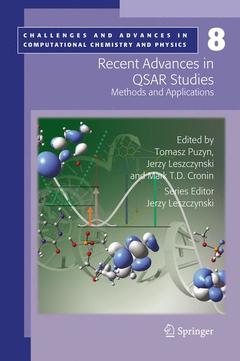Description
Recent Advances in QSAR Studies, 2010
Methods and Applications
Challenges and Advances in Computational Chemistry and Physics Series, Vol. 8
Coordinators: Puzyn Tomasz, Leszczynski Jerzy, Cronin Mark T.
Language: English
Subject for Recent Advances in QSAR Studies:
Publication date: 03-2012
414 p. · 15.5x23.5 cm · Paperback
Publication date: 12-2009
414 p. · 15.5x23.5 cm · Hardback
Description
/li>Contents
/li>Comment
/li>
An interdisciplinary overview on recent advances in Quantitative Structure–Activity Relationships (QSAR) studies
Presents both a review of new ideas about methodology and new areas of QSAR applications
A simply written, practical guide for academics, industrial scientists and decision makers taking their first steps in QSAR analysis




